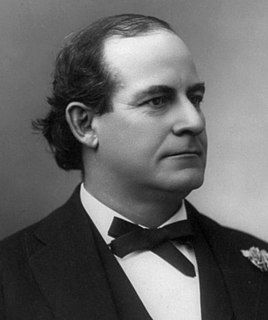
This is a list of properties and historic districts in Oregon that are listed on the National Register of Historic Places. There are listings in all of Oregon's 36 counties.
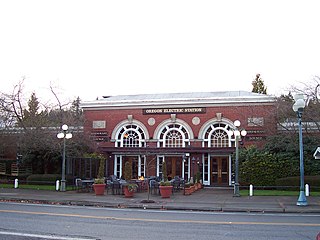
The Oregon Electric Station is a restaurant in Eugene, Oregon, United States. It was originally built in 1914 as a station for the Oregon Electric Railway and was designed by A. E. Doyle.
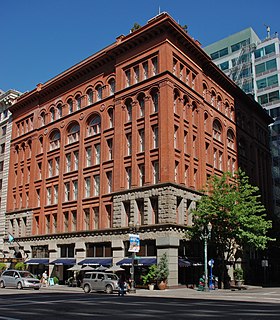
The Kimpton Hotel Vintage Portland, historically known as the Imperial Hotel and also as The Plaza Hotel, is a historic hotel building in downtown Portland, Oregon, United States. It was completed in 1894 and was listed on the National Register of Historic Places in 1985 as "Imperial Hotel". Since 2015, the building has been in use as the Kimpton Hotel Vintage Portland, and prior to then it had been known as the Hotel Vintage Plaza since 1991.

The Hotel Lucia, formerly the Imperial Hotel, is a historic hotel building in downtown Portland, Oregon, United States. It was built in 1909 as an extension of the adjacent, original Imperial Hotel. The original Imperial building was made into a separate hotel in 1949, renamed the Plaza Hotel, and after a period of non-hotel use in the 1980s it today operates as the Kimpton Hotel Vintage Portland.

The Geiser Grand Hotel is a historic hotel in Baker City, Oregon, that opened in 1889. It received a restoration and reopened in 1993 after closing in 1968. Decorations include mahogany columns up to a high ceiling, Victorian-style chandeliers, and a stained glass ceiling. It was known as "the Queen of the Mines" during Gold Rush times and described as being the finest hotel between Portland, Oregon and Salt Lake City with the third elevator built west of the Mississippi River.
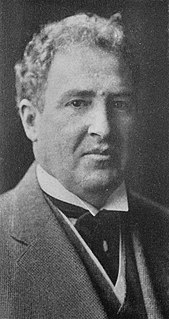
John Virginius Bennes was an American architect who designed numerous buildings throughout the state of Oregon, particularly in Baker City and Portland. In Baker City he did an extensive redesign of the Geiser Grand Hotel, designed several homes, and a now-demolished Elks building. He moved to Portland in 1907 and continued practicing there until 1942.
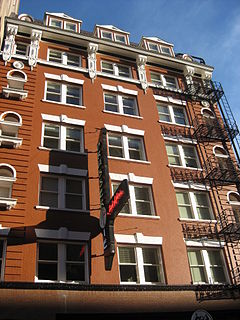
The Calumet Hotel, also known as the Esquire Hotel, is a former hotel building located in downtown Portland, Oregon, that is listed on the National Register of Historic Places. The building was changed from a commercial hotel to a residential hotel for low-income residents in the 1930s. At some point, it took the name Esquire Hotel. By the time of its nomination to the National Register, in 1983, it was vacant. The building was renovated in 2008–09 and is now known as "The Esquire" apartments.

The Daniel and Catherine Christian House, located in Eugene, Oregon, is a house listed on the National Register of Historic Places. Constructed c. 1855, the house is the oldest residential structure in Eugene and one of six remaining classical revival houses in Lane County.

The Eugene Hotel is a historic hotel building in Eugene, Oregon, United States.

The Lane County Clerk's Building, located in Eugene, Oregon, is listed on the National Register of Historic Places.

The Lane Hotel, also known as the Lane Building, is a historic former hotel building in Eugene, Oregon, United States.
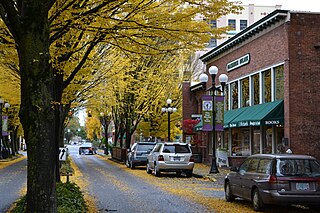
The Quackenbush Hardware Store, located in Eugene, Oregon, is listed on the National Register of Historic Places. The store opened in 1903 under the name J. W. Quackenbush's, selling farm implements, hardware, and horse-drawn vehicles. Gradually the inventory shifted to kitchen items and dinnerware, toys, and gift items. The store closed in 1980.

Woodrow Wilson Junior High School, located in Eugene, Oregon, United States, is listed on the National Register of Historic Places. The school was constructed in 1924 on four acres at 650 West 12th Avenue near Jefferson Street for the Eugene Public School System. Architect Frederick Manson White of Portland designed the 57,120 square-foot building to accommodate 840 students. White also designed the other school built that year in Eugene, Roosevelt Junior High on Agate Street. After it opened in September 1925, Wilson became a central part of middle school education in western Eugene. In 1953, the Wilson school was converted to an elementary school and renamed Lincoln Elementary School. Aspects of the building were altered to accommodate smaller students, such as lowered blackboards and bathroom fixtures. The original twenty classrooms were reduced to fourteen, creating larger interior spaces that included administrative offices. The library was made smaller, and a storeroom and kitchen were added. After the school was closed and vacated by the school district in 1987, the building was repurposed as the Lincoln School Condominiums.

Lord Nelson "Nels" Roney was a building contractor and carpenter working primarily in the U.S. state of Oregon. He designed and built many of Oregon's early covered bridges, often using the Howe truss. Roney also built bridges for the Oregon and California Railroad from Roseburg, Oregon south to Redding, California, and he constructed commercial buildings and houses in Eugene, Oregon.

The McMorran and Washburne Department Store Building, also known as the Tiffany Building, is a four-story commercial structure in Eugene, Oregon. The original two-story building was constructed in 1902 by Nels Roney as a dry goods store owned by former Eugene mayor J. H. McClung. The building was expanded to four stories in 1913.






